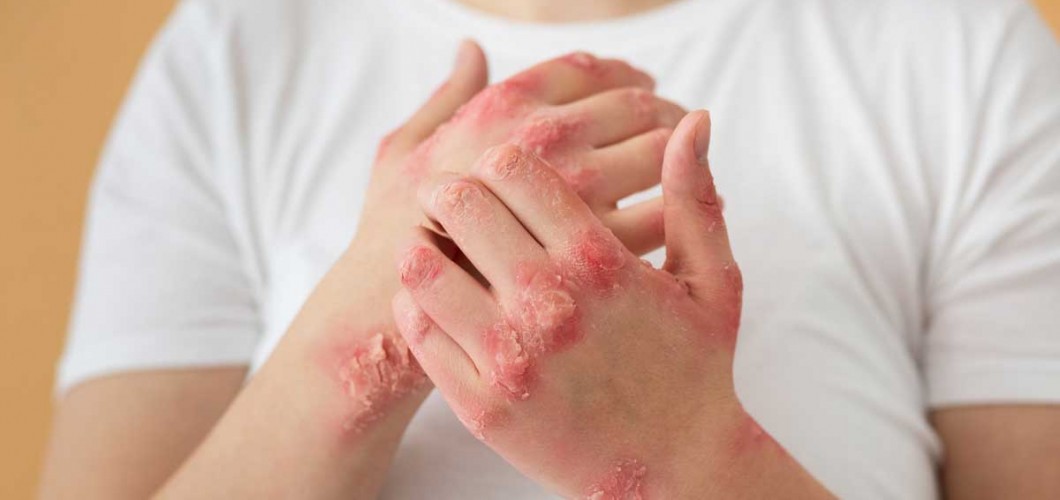
Skin injuries are some of the most common health issues we encounter in daily life. Cuts, abrasions, burns, and other types of wounds can occur due to accidents, household chores, sports, or improper handling of objects. If not treated properly, these injuries can lead to infections and delay the healing process. In this article, we will discuss how to administer first aid for skin injuries, essential first aid information, and effective intervention methods that can speed up recovery.
Common Causes and Types of Skin Injuries
Skin injuries can be caused by a variety of factors. These include cuts, abrasions, burns, and deep wounds. Each type of injury requires different forms of intervention. Here are the most common types of skin injuries:
1. Cuts (Lacerations)
Cuts are caused when the skin is torn by a sharp object. They can occur from accidents involving knives, broken glass, or metal parts.
First Aid Application:
- Clean the affected area. If bleeding continues, apply pressure using a clean gauze or sterile cloth.
- Once the bleeding stops, clean the wound with an antiseptic solution.
- Cover the wound with a sterile bandage. If the wound is deep, professional medical assistance might be required for stitching.
2. Abrasions (Scrapes)
Abrasions are superficial injuries that occur when the top layer of the skin is scraped off due to friction or impact. These injuries are generally mild and have a short recovery time.
First Aid Application:
- Wash the wound with water and soap.
- Clean the wound with an antiseptic solution.
- Apply a sterile dressing over the wound. While abrasions usually heal quickly, it’s important to keep the area clean to prevent infection.
3. Burns
Burns occur due to excessive heat, chemicals, electricity, or sun exposure. Burns can be classified into first, second, and third-degree based on severity.
First Aid Application:
- Cool the burn by running it under cold water immediately.
- Continue cooling the area for at least 10-15 minutes.
- Cover the burn with a sterile gauze but avoid applying creams or oils.
- If the burn is severe, call emergency services.
4. Puncture Wounds
Puncture wounds occur when an object like a nail, needle, or sharp object penetrates the skin and deepens into the underlying tissues.
First Aid Application:
- Stop the bleeding by applying pressure with a clean cloth.
- After cleaning the wound, apply antiseptic and cover with a sterile bandage.
- For deeper puncture wounds, it’s crucial to consult a healthcare professional to prevent infection and possible tetanus.
5. Foreign Bodies in the Skin
Foreign objects like metal, glass, or wood can become embedded in the skin during an accident.
First Aid Application:
- Do not remove the foreign object because this may increase bleeding.
- Cover the object with a sterile cloth and apply pressure to stop the bleeding.
- Seek emergency medical help immediately.
Key Considerations in Skin Injury First Aid
Proper treatment of skin injuries is important to avoid complications. Improper intervention can increase the risk of infection and delay the healing process. Here are some key points to keep in mind when administering first aid for skin injuries:
1. Infection Risk
There is always a risk of infection with skin injuries. Therefore, it’s crucial to keep the wound clean and use antiseptics. If the wound does not heal or becomes red and swollen, seek medical attention.
2. Pain Management
Skin injuries often cause pain. Pain relievers can be used to manage discomfort. However, consult your doctor before using pain relievers regularly.
3. Wound Coverage and Protection
Covering the wound helps prevent infection. Use sterile dressings and bandages to keep the wound clean and dry. Applying pressure can also help stop bleeding in some cases.
4. Skin Care and Healing Process
Keeping the wound clean and moist can speed up the healing process. The severity of the injury, such as how deep the wound is, affects the recovery time. Deeper wounds may take longer to heal.
Conclusion
Skin injuries are typically manageable with proper first aid, but if not addressed correctly, they can lead to infections and other complications. By following the right first aid procedures based on the type of injury, you can accelerate the healing process and reduce the risk of further issues. Remember, always stick to the basics of first aid and seek professional help when necessary for the best outcomes.

Leave a Comment